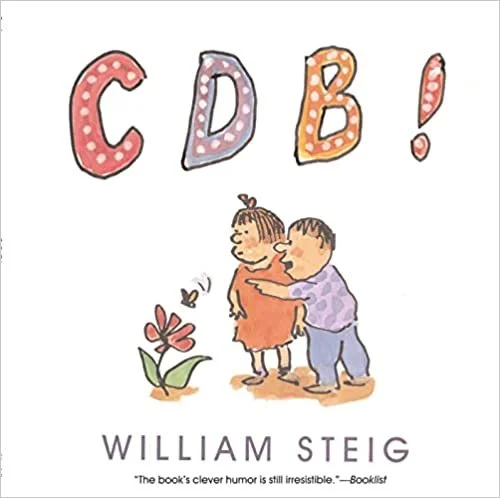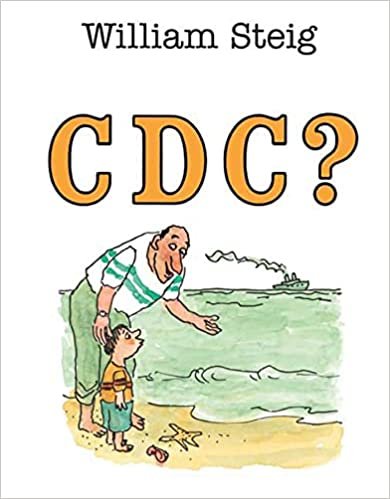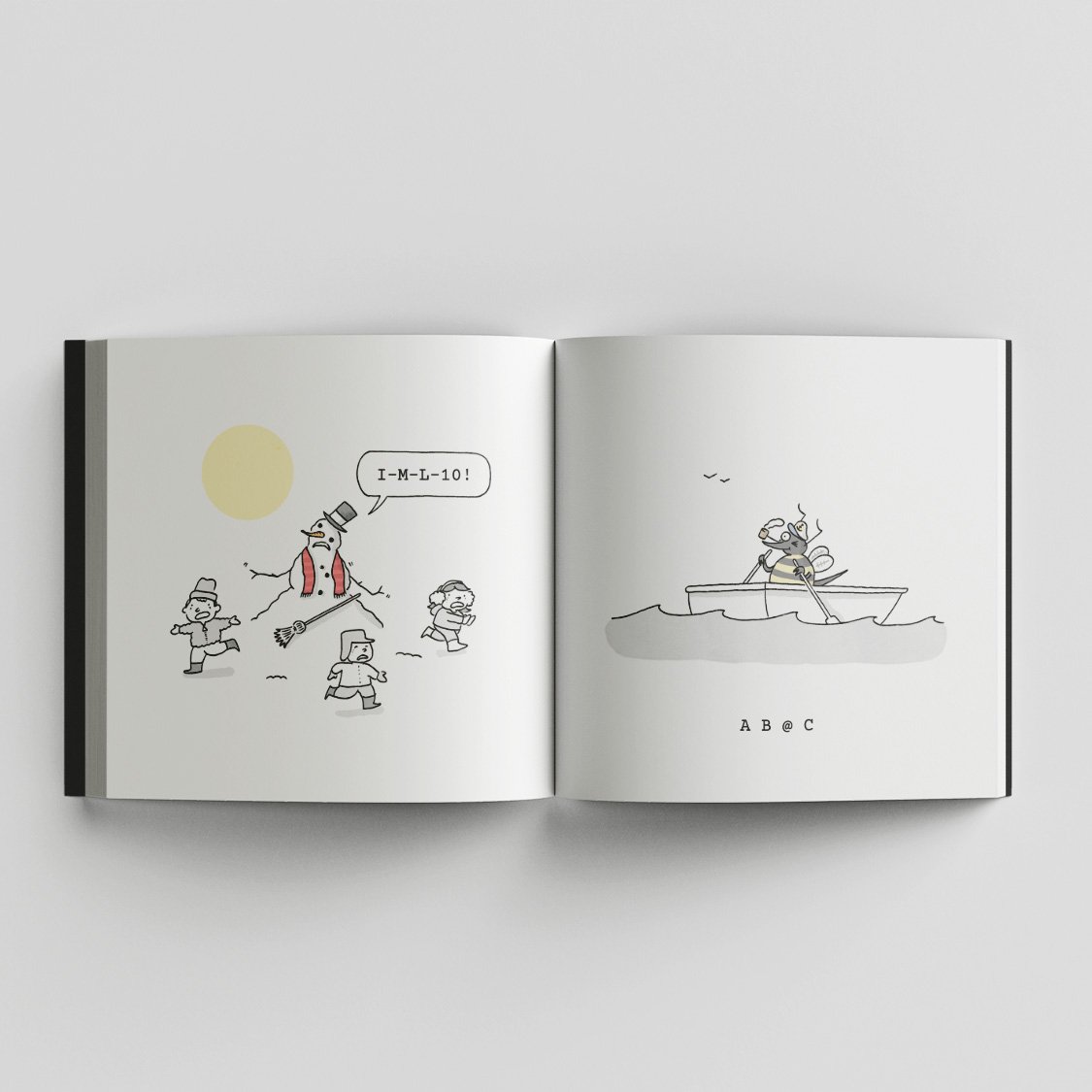L-O, welcome to gramograms.com.
What is a gramogram?
gram·o·gram (ˈgra-mə-ˌgram): one or more letters (or numbers) that, when pronounced out loud, form a word or phrase.
Technically, a gramogram (also known as a grammagram, gramagram, or letteral word) is a type of rebus, a puzzle in which letters, numbers, and illustrations are used to form words or phrases. Learn more about gramograms on Wikipedia.
On this page
Drawing by Dan Misdea from AB@C
About gramograms
Gramograms (scroll up for a definition) have been around for over a hundred years (at least), but it took the proliferation of mobile phones in the 1990s to bring them into our everyday lives. Before cellphones had touchscreens or QWERTY keyboards, text entry was slow and tedious. (Life was tough, kids!) That, and the fact that text messages were often limited to 160 characters, left users looking for ways to say more with fewer characters.
In some cases, texting led to the shortening of phrases into initials (e.g., LOL for “laughing out loud”) or the replacement of parts of words with letters and numbers (e.g., l8r for “later”). But occasionally, entire words or phrases were replaced by letters and numbers: R U OK? for “Are you ok?” CU for “See you.”
When a complete word or phrase is replaced by a series of letters or numbers read aloud, that’s a gramogram.
Everyday gramogram examples
To decipher a gramogram, just read the letters (or numbers and symbols) out loud. Hyphens between letters mean that they’re part of the same word. Harder gramograms may take you more than one try, but with repetition, help from a friend, and maybe a hint (e.g., a drawing), you’ll get them all eventually!
-
“I owe you.”
-
“Canine”
-
“Are you ok?”
-
“See you!”
Less familiar gramogram examples
These are slightly harder. Looking for even more of a challenge? Keep your eyes open for Rob Meyerson and Dan Misdea’s upcoming book, AB@C. (Scroll down for more info.)
-
“Expediency”
-
“Have you any eggs?”
-
“Tennis, anyone?”
-
“It’s easy to see you, too.”
William Steig, godfather of gramograms
Best known as the author of Shrek! (on which the Mike Meyers movies are based) and other children’s books, William Steig (1907–2003) was also a New Yorker cartoonist. While he didn’t invent gramograms, he revolutionized them by pairing them with his drawings—first in 1968, with CDB!, then again in 1984 with his followup, CDC?
Steig in 1944, via Wikipedia
CDB! (“See the Bee!”)
CDC? (“See the Sea?”)
Tips for reading gramograms
Having trouble? Try these tips:
Say each letter, number, and symbol aloud, by its name. Don’t try to read the letters.
If you don’t get it immediately, try reading it again. Play with pace and inflection.
Read the gramogram out loud to a friend, or have them read it to you.
If the gramogram has an associated drawing, look for clues!
Pay attention to hyphens. Letters connected by hyphens form a single word.* I.e., @ M could mean “at him” while @-M might mean “atom” or “Adam.”
The same letter(s) can mean more than one thing. Even if S meant “is” the first time you saw it, it could mean “us” or “his” the next time around.
* Note, however, that perfect hyphenation is not always possible. One of Steig’s best gramograms, from CDB!, is I N O, meaning “I don’t know.” Hyphenation doesn’t work well here because the N plays a role in two words—the end of “don’t” and the beginning of “know.”
A new book of gramograms
COMING SOON!
Author Rob Meyerson (creator/owner of this page) and New Yorker cartoonist Dan Misdea have re-envisioned gramograms for the twenty-first century in their new book, AB@C, available in November, 2024.
AB@C is both an homage to Steig’s groundbreaking work and a leap forward, with all-new gramograms that feature previously unused symbols, words, and settings.
Other fun wordplay books
CDB! and CDC?, both by William Steig, were the inspirations for AB@C, a new book of gramograms. While working on AB@C, Dan Misdea (illustrator) discovered another book of gramograms, as well as a fantastic book written entirely in palindromes. If you love wordplay, you’ll love these books.
CDB!
William Steig’s original gramogram book (1968)
CDC?
William Steig’s follow-up book of gramograms (1984)
D C-T! (The City!)
A 2018 book of New York-themed gramograms, by Joana Avillez and Molly Young
Otto: A Palindrama
Jon Agee’s graphic novel told entirely in palindromes—words and phrases that read the same backwards and forwards (e.g., “Mr. Alarm”).







